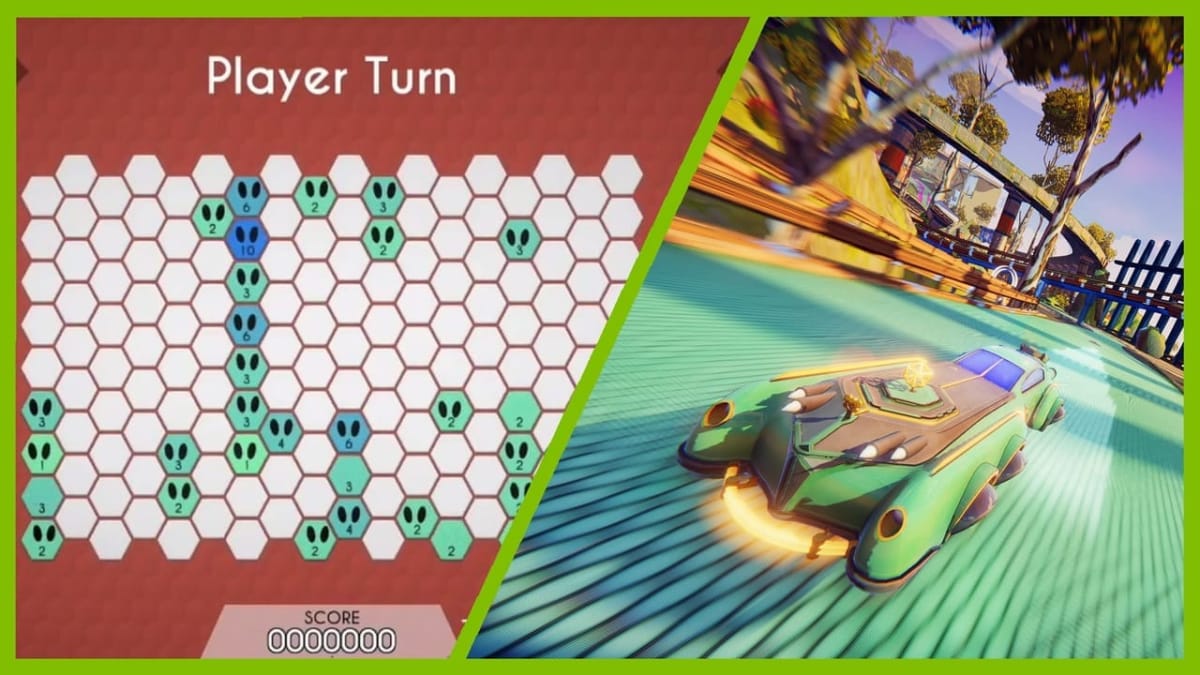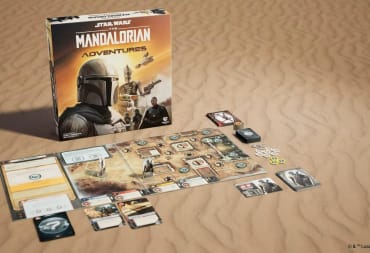Welcome to Coverage Club, the regular series where we shift our critical eye towards smaller games that deserve some attention. Each week, our editors select two titles and provide honest first impressions in the same style as our full reviews. Games can range from brand new titles hitting Early Access to older hidden gems that never got their due. No matter your preferences, you’re sure to find something off the beaten path here. This week, we hit the painted tracks of Trailblazers and solve for X with Containment.
Trailblazers
Covered by Alex Santa Maria
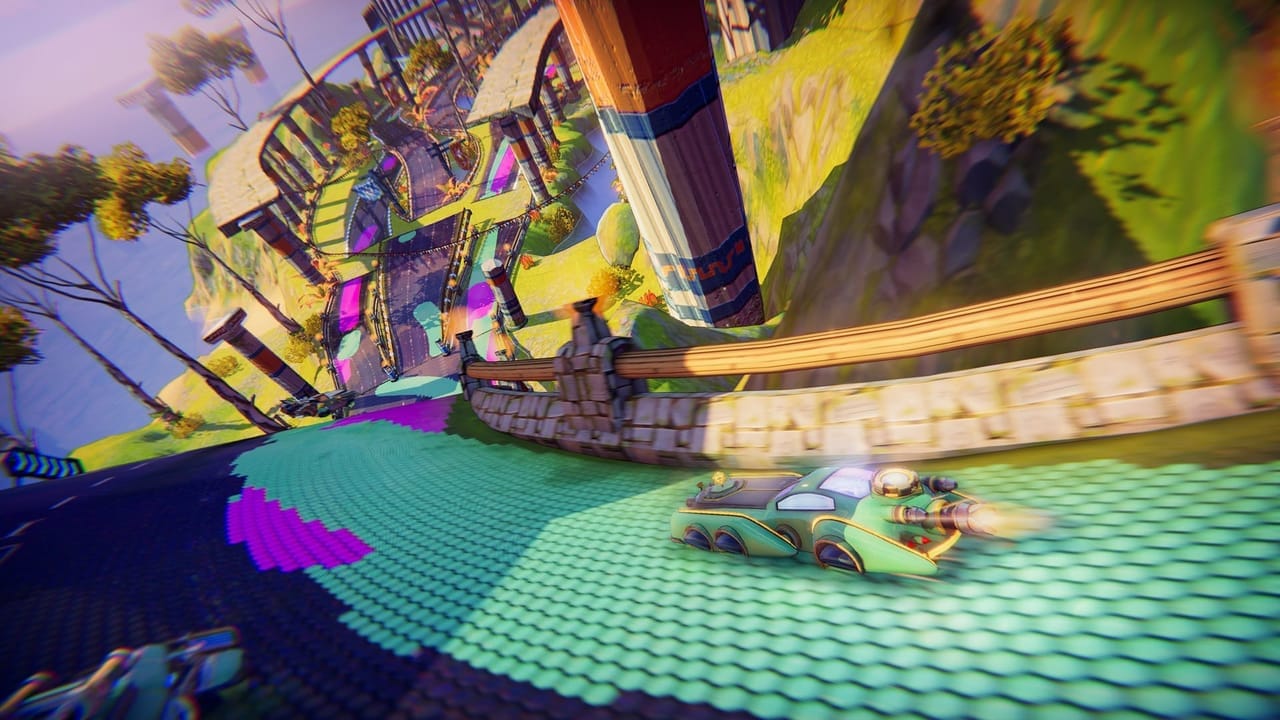
Any new racer that forgoes racing lines and engine tuning for arcade gameplay is a cause for celebration. The genre has been on life support for a long while, making new titles notable even if they're derivative of what came before. The release of Supergonk's Trailblazers is even more special because it has something new to bring to the table. Merging futuristic hovercars with a paint mechanic straight out of Splatoon, this boost heavy driving game has a lot of that sweet styyyyyyyyyle.
Once you load up Trailblazers, you're immediately hit with the game's funky soundtrack. Described as "retro-futuristic" by the game's marketing (whatever that means), I have a hard time really pinning the music down. There is some punk in there, but it's also upbeat and jaunty. You can also very much tell that the developers are based in the UK. Whatever its genre may be, the backing tunes fit the gameplay perfectly. This is a bouncy game with colorful graphics and an encouraging attitude towards its players.
This drive to move forward is good because Trailblazers is all about the boost. As you hover around corners and down alternate paths, you can leave a paint trail behind you. As long as you drive on the painted track that matches your color, you're boosting. If you see something that isn't your color, you can paint over it to pull the brakes on an opponent's boost train. Most types of races encourage you to work with teammates to build a boost line and blast past the opposition. It's a simple mechanic that completely changes how you race, but it doesn't always work swimmingly.
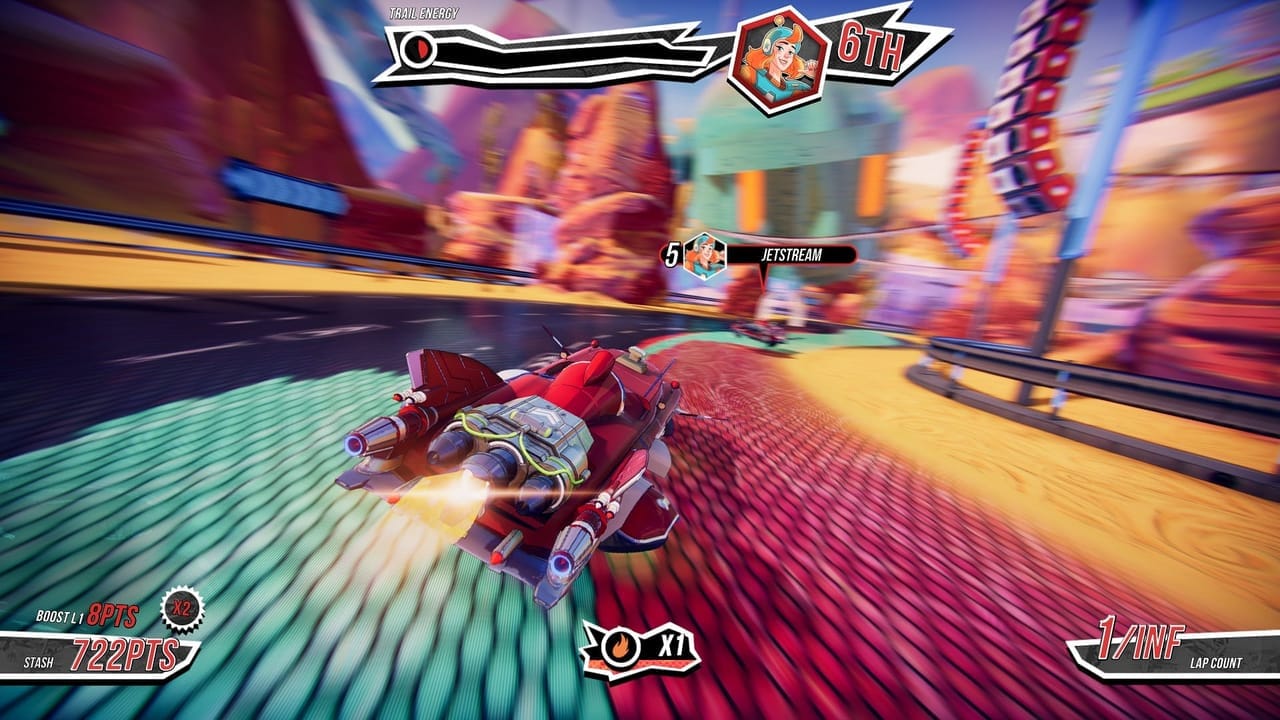
For one, because of the paint mechanics, this racing game doesn't put all its eggs into the First Place basket. Instead, there's a points system that rewards fast driving and painting with equal measure. You can chain points together for a greater payout, but you lose your combo whenever you slam into a barrier. This is similar to the way Burnout rewards dangerous driving, but Burnout's controls are much tighter. Trailblazers' hovercars are ridiculously floaty, featuring drafting that often flings you in a random direction. Without that pinpoint accuracy, you often feel unable to affect the results of a race, even if you're stomping the competition in placement.
Trailblazers clearly prioritize style over gameplay, and that will work for some. There's plenty of content to devour here in local and online multiplayer. This includes 10 tracks, mirror and reverse modes, and multiple different race types. You can also run through the game's single-player campaign, which does a good job of introducing the game's cast of characters one at a time. Each driver has a distinctive car that promotes a new style of play, and the differences between them are pretty significant. The AI doesn't pose too much of a challenge, but you will have to get a grip on the game's unique mechanics.
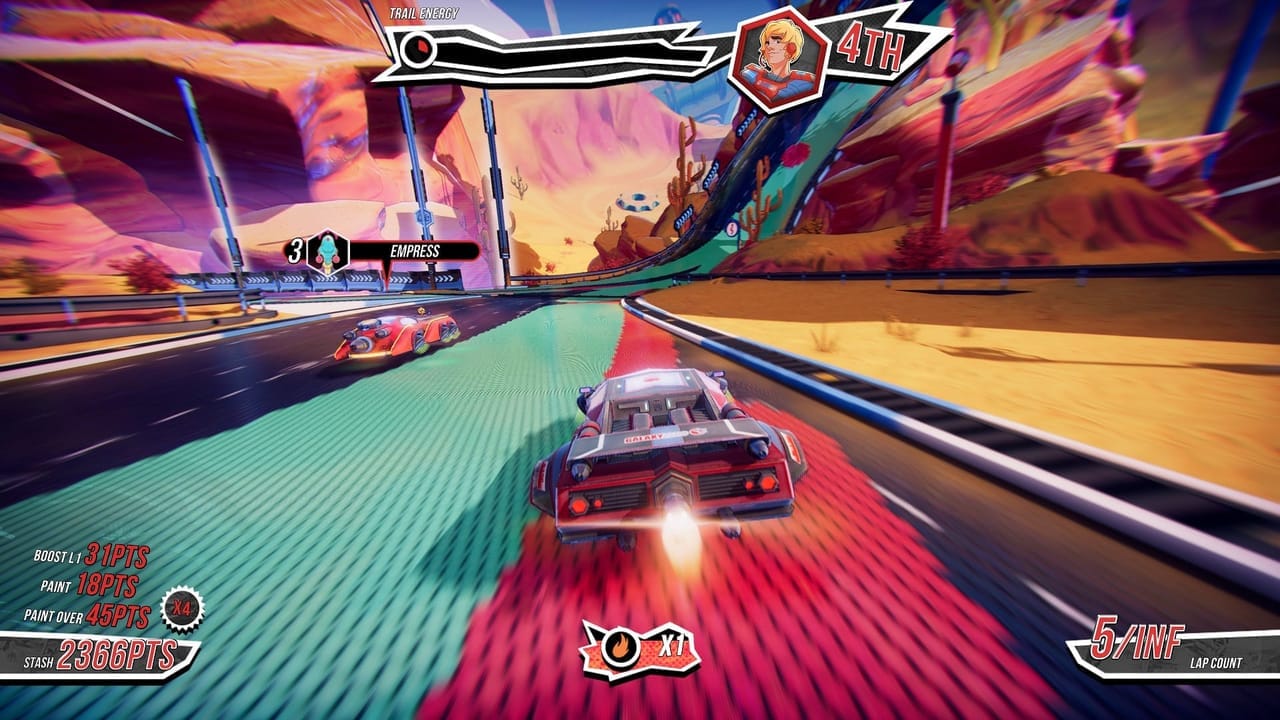
Sadly, unfocused gameplay isn't the worst problem that Trailblazers has. I played on PC, and the game lacks any form of keyboard and mouse support. The Steam store page clearly marks this, and it's possibly due to the game's crossplay support with console platforms. Still, it's still a pretty big omission for any mid-tier release on PC in 2018. The game also has a few major technical flaws, including a big that erases save games and settings whenever you quit out of the game. I experienced this both before and after the game's release, and the Steam forums are full of others who share in this issue. Until a patch comes through, it's hard to recommend Trailblazers.
Assuming that the game eventually runs as intended, Trailblazers is pretty fun if you know what you're getting into. This isn't a precision racer, but the painting mechanics and focus on teamwork make it stand out from the crowd. If you just want to chill with a space frog and hop along the painted track, then Trailblazers might be right up your alley.
Trailblazers was played on PC via Steam with a code provided by the publisher. It's also available on Xbox One, PlayStation 4, and Nintendo Switch.
Containment
Covered by Trevor Whalen
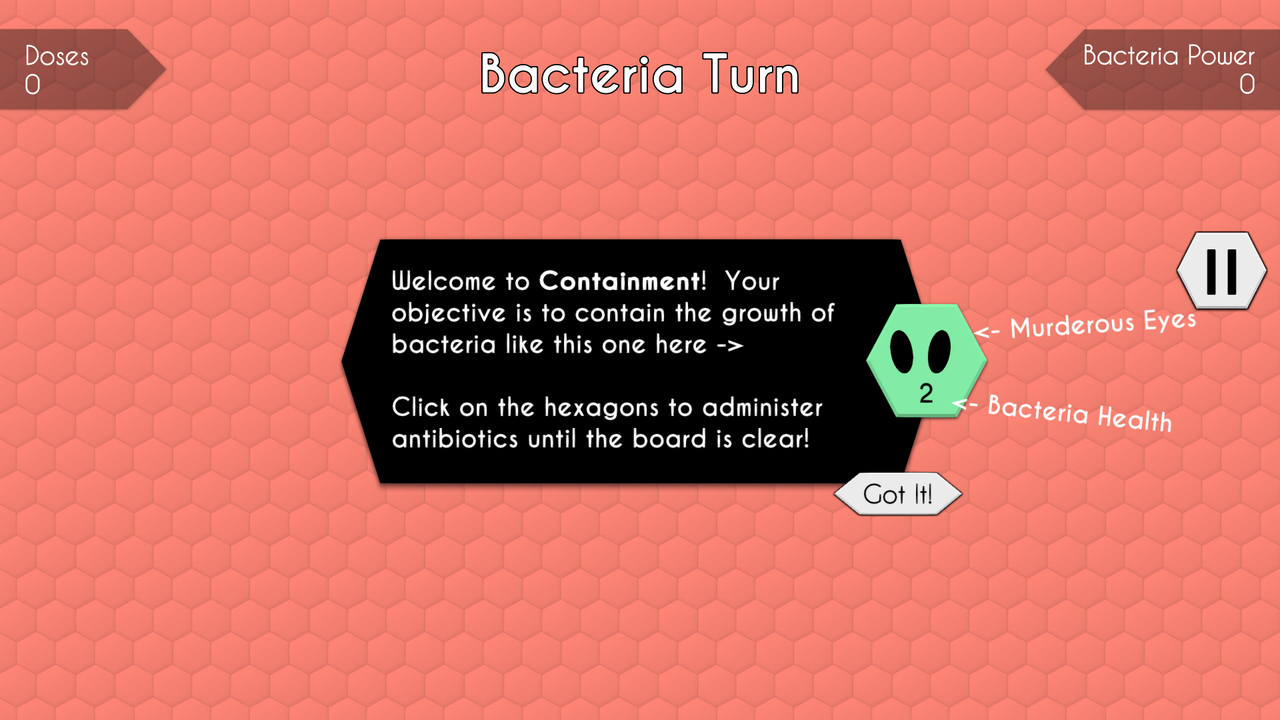
Containment is a puzzle game that I loved right from the start. It has simple, cartoony visual and auditory aesthetics that immediately delight. Beyond the bouncy, poppy art, Containment is a fun, addictive, and challenging puzzle game that forces you to come up with and balance different strategies throughout.
The gameplay is simple: you click on outlined areas on a board of hexagons. These hexagons are filled in by bacteria, and before your last turn in a round, you want to eliminate all of them. Until that point, you must contain them such that they do not grow to fill the entire board. There is some counter-intuition here since you don’t want to eliminate all the bacteria on a first turn, even if you can. You want to use all the turns, if possible, because with each turn that bacteria are left you gain points. As you progress, tutorial levels introduce new aspects that add to all the details you have to watch out for.
Each time you have a turn, you use up “dosages” as you click on the bacteria. Each time the bacteria has a turn, they each lose one point, and then more bacteria are added based on the bacteria’s power. So if a certain bacteria has one hit point, you can leave it be on your turn, as it will be eliminated on the bacteria’s turn. If a bacteria has two hit points, you want to get it down to at least one so it will then be eliminated in the bacteria’s turn.
You don’t have to use all your dosages on any given turn. You can choose to end your turn at any point during it, and upon doing so your remaining dosages are added to your research score. Whenever your research score hits a milestone, like ten points, it levels up and your dosages earn more power. This means if at the start you just subtract one hit point from bacteria, once your research levels up you’ll start subtracting two points, and so on.
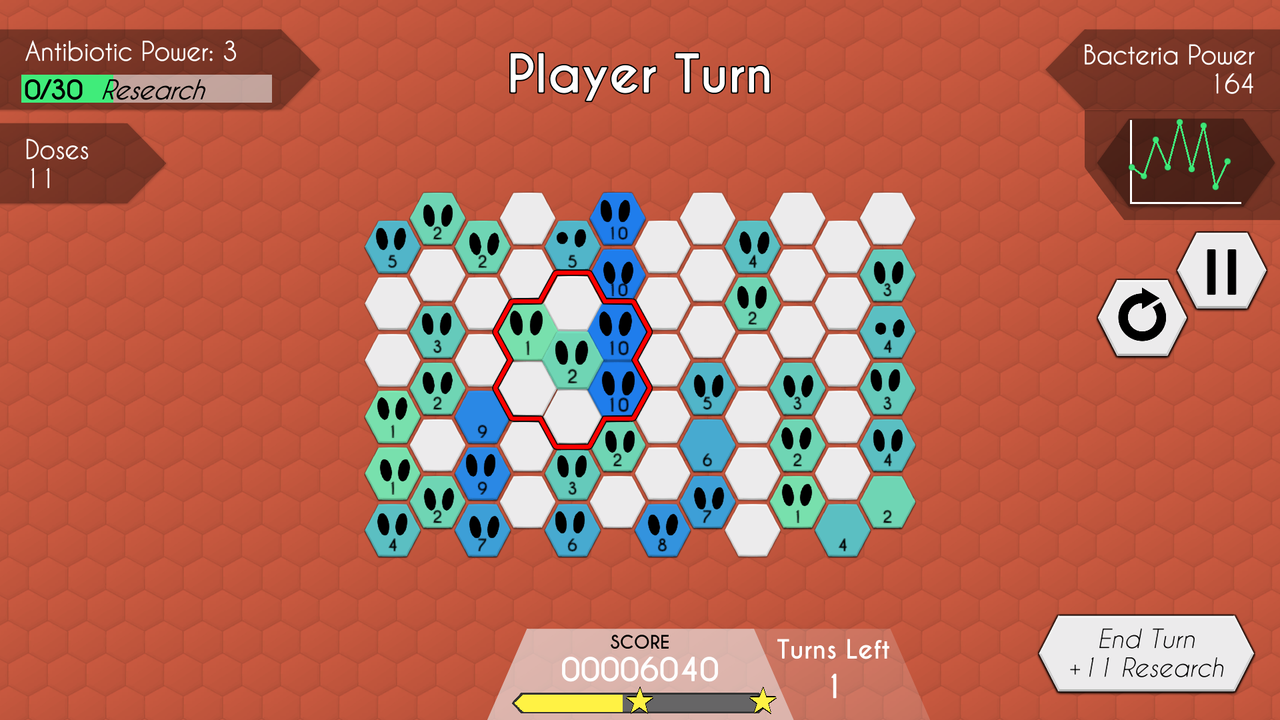
During your turn, you have to balance using dosages, to contain the bacteria, with saving dosages to boost your research score. Add to this the fact that the more bacteria there are at the end of a turn, the more points go into your score each turn, and you have a real impetus to even skip a turn without eliminating any bacteria, if possible.
Different levels have different setups. Some make it easier to level up your research, but the bacteria have more power and grow at a higher rate. Some levels make it purposefully easy to eliminate all the bacteria on a first turn and add more turns than usual, the challenge being to build up as a high a score as you can without eliminating the bacteria but making sure you don’t overlook their growth too much and suddenly have them overwhelm you. In any given setup, there’s always a point in a round of Containment where the bacteria suddenly turn the tide against you. I’d feel on top of it, then after one turn, I’d suddenly be check-mated.
There are strategies you’ll pick up on as you play. For example, bacteria that have a transparent encasing around them, or “resilient bacteria,” can only be eliminated if isolated. This means if no bacteria are adjacent to them, they will be eliminated on the bacteria’s turn, no matter their hit points. This is also a way to get rid of standard bacteria, but with resilient bacteria, it is the only way once again.
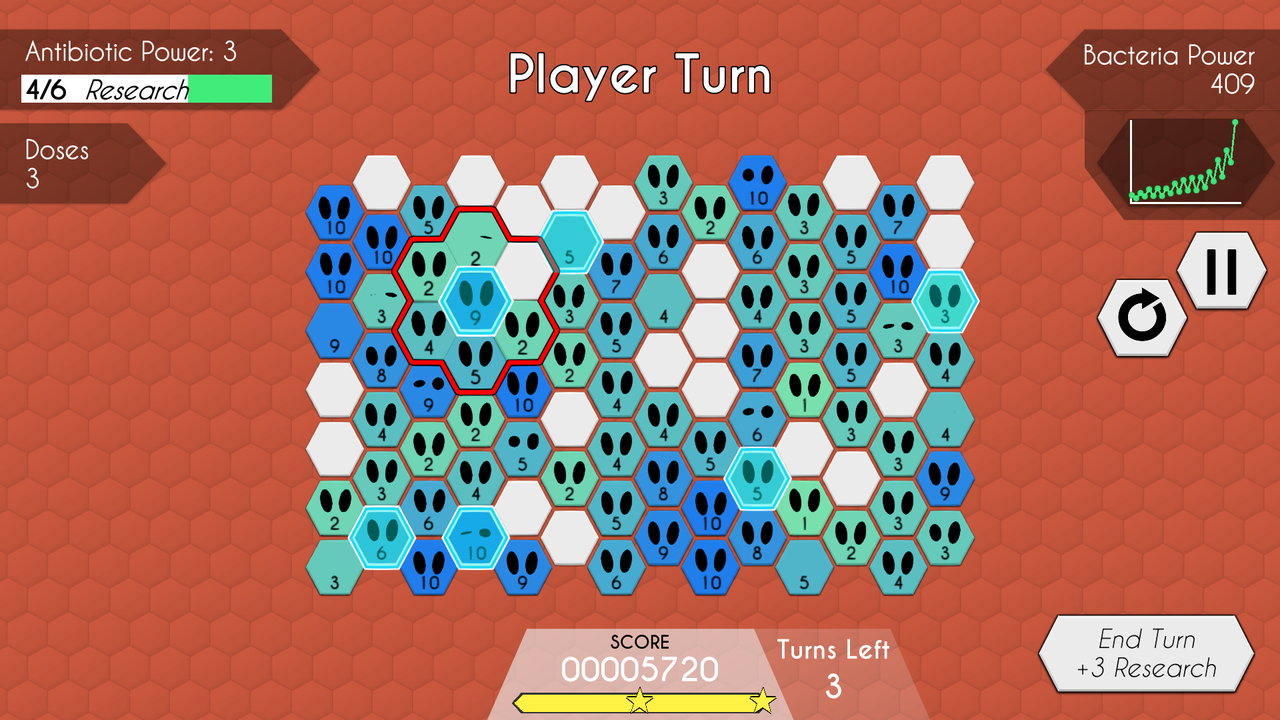
So, let’s suppose I have an antibiotic power of three, because of research, and I want to keep the game going for a few more turns, for a higher score, but I also need to keep the bacteria in check. I see several of those special encased bacteria, surrounded by bacteria with hit points ranging around four and three. I click on areas containing those bacteria, eliminating the ones with three and reducing the ones with four to one. Then, on the bacteria’s turn, those with one are eliminated, meaning that the encased ones they surrounded, now isolated, are eliminated as well. You’ve taken care of a bunch of bacteria, but plenty are left, so the game keeps going. And, if you just used a few dosages, your research score goes up, so you have can take away more hit points.
There are leaderboards at the end of each turn, and high score milestones you can reach. These give you the motivation to make your strategies more and more efficient so that you can hit the high scores and try to outdo the best.
The gist is that Containment is a balancing act. You want to eliminate the bacteria, but you want to keep the game going as long as you can, preferably until the last turn has been used up. You want to spend dosages to eliminate bacteria, but you also want to save dosages to build up your research score. Depending on the setup of each level, you’ll strategize differently. It all makes for a fun, addictive puzzle game, that’s aesthetically pleasing as well.
Containment was played on PC via Steam with a code provided by the developer.
What do you think of this week’s Coverage Club selections? Do you know of an overlooked game that deserves another chance? Let us know in the comments below, and don’t forget to follow our Steam Curator to keep up to date with all our reviews.
Have a tip, or want to point out something we missed? Leave a Comment or e-mail us at tips@techraptor.net
